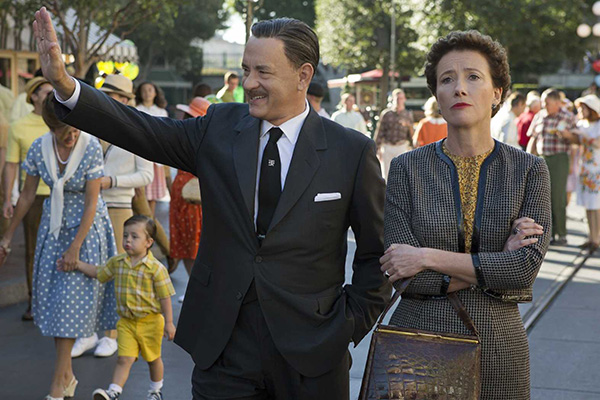Saving Mr. Banks
Directed by John Lee Hancock
Exquisite performances and a powerful story make this film a success. You may be familiar with the classic 1964 Disney film Mary Poppins. The 2013 film Saving Mr. Banks invites you to become familiar with the tormented artists responsible for producing such an uplifting and memorable childrens’ tale. Emma Thompson is superb as the austere P.L. Travers, who wrote the original book. When Walt Disney, captured magnificently by Tom Hanks, finally convinces her to come to Los Angeles to co-write a film screenplay, she finds that his alterations conflict with her values and dark past.
By showing us the struggle between Travers’ rigid artistic integrity and Disney’s mass consumerism, the film causes us to question why people ever choose to create artworks at all. Is it to exorcise the demons they carry? To preserve a perfectly-imagined dream against a cruel reality? Or simply to make money?
A similar, fantastically provocative theme was the question of whether or not Walt Disney is evil. He wants to ‘dumb down’ the Mary Poppins story as it was written, and we are set up to hate him and the way he sold out his own treasured creation, the Mickey Mouse character, in the form of gaudy merchandise. But it is no spoiler to reveal that in the end Disney has his way and the Mary Poppins film (surprise, surprise) is made. Can he be evil for trying to sprinkle a little pixie-dust on every child, for profit? Or is Travers the evil one, for refusing to take joy in her own life; or for eventually getting a taste of Disney’s whimsy and money, and caving in? You’d best see the film and decide these questions for yourself.
This film’s climax was so inspiring it even made me forget how deeply I detest Colin Farrell in everything – not to mention the Disney corporation, as a whole.



